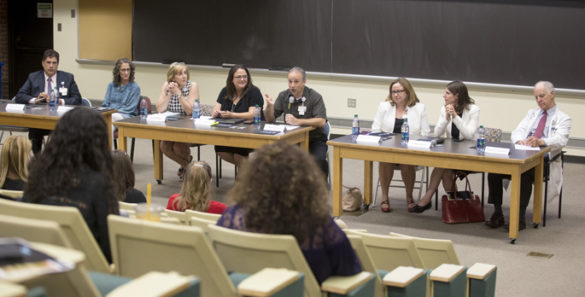A new Web-based tool is helping Vanderbilt research coordinators assemble accurate billing plans more quickly.
Biomedical studies with human subjects at Vanderbilt generally require a clinical trial billing plan, encompassing any patient tests and procedures, clinic visits, therapy and so on. In the event that absolutely no clinical costs will accrue either to the study or to enrolled patients, research coordinators apply for a billing plan exemption.
The new tool for creating billing plans and applying for exemptions is called Charge Intention, and it’s now available on StarBRITE (Vanderbilt login required).
According to one user, Wendi Mason, a research nurse coordinator with the Division of Allergy, Pulmonary and Critical Care Medicine, Charge Intention amounts to a significant improvement over the program she previously used to create clinical trial billing plans.
“The new tool flows well and has a more intuitive design,” Mason said.
Charge Intention is also better integrated with Vanderbilt cost databases, which allows it to pull up accurate figures with fewer steps.
“With Charge Intention, billing plans will be more accurate from the start, so my office expects review and turnaround to speed up, which should please researchers and research coordinators,” said Janet Fry, R.N., manager of clinical research facilitation with Vanderbilt’s Office of Contracts Management.
Fry points to another main benefit of Charge Intention: “It was created here at Vanderbilt, and that gives us optimum flexibility to modify and improve it.”
A video introduction and brief instruction manual for Charge Intention are available on StarBRITE, and a two-hour class called Taking Charge with Charge Intention is available from the Office of Contracts Management.
Design and development of Charge Intention is led by Paul Harris, Ph.D., research associate professor of Biomedical Informatics and Biomedical Engineering.
The project was partially supported by Clinical and Translational Science Award UL1TR000445 from the National Center for Advancing Translational Sciences.















